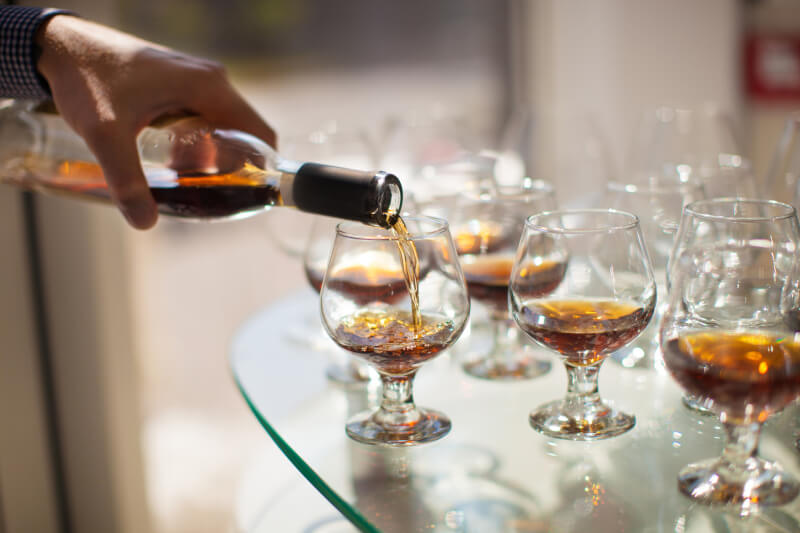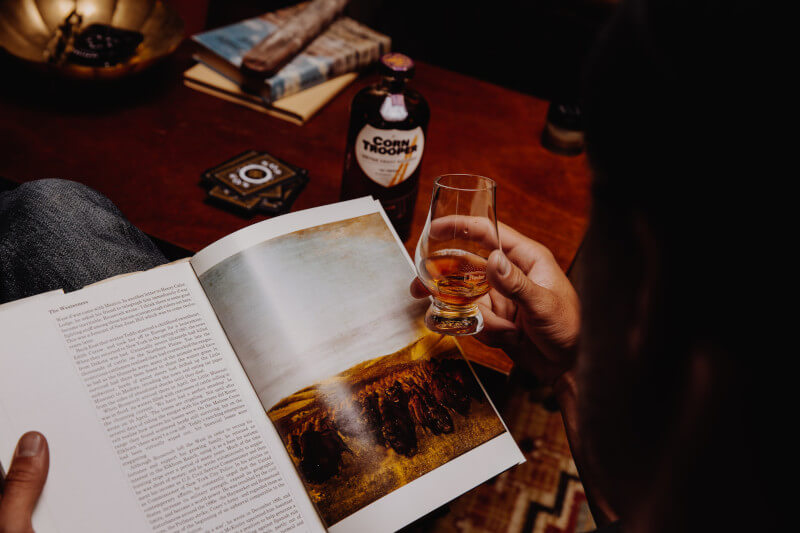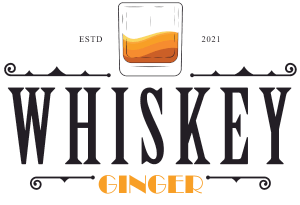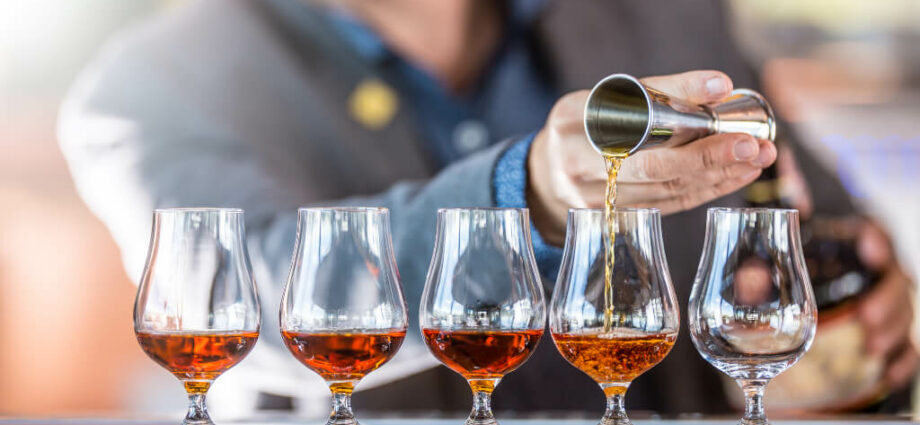So, you fancy yourself a whiskey connoisseur? Perhaps your evenings are often accompanied by the warming embrace of a smoky single malt or the smooth sensation of a well-aged bourbon. But do you ever wonder if you have the palate, the prowess, and the perception to be on a whiskey-tasting panel? Here’s what it takes to be a part of this esteemed club.
A Nuanced Palate is Essential
The first and most obvious skill for a panelist is the ability to distinguish between subtle flavors and aromas. It’s not just about detecting notes of vanilla or caramel; it’s about teasing apart the nuanced differences between Madagascar vanilla and Tahitian vanilla or identifying the smokiness of peat versus that of cherrywood. Think of your palate as a musical instrument – the more finely tuned it is, the more notes it can play. I recall a panel where one of the members could differentiate between the regional origins of barley in a blind tasting!
Memory Power: Linking Sensations to Experiences
You might’ve tasted the best whiskey years ago, but can you remember the exact flavor profile? Great panelists not only have an exceptional palate but also a reliable memory. They can relate a whiskey’s taste to past experiences, drawing parallels to whiskeys they’ve tried before.
A Vocabulary Beyond “Tasty” and “Smooth”
The words you use to describe what you’re tasting matter. While “yummy” might work in casual settings, in a panel, you’ll need a more descriptive vocabulary. Words like ‘peaty’, ‘tannic’, ‘velvety’, ‘bright’, and ‘astringent’ become crucial in conveying your impressions.
Patience and Practice
Becoming an expert in anything requires time and dedication. Just as a sommelier goes through extensive training to identify the subtlest of notes in wine, a whiskey panelist needs to practice. Regular tasting sessions, joining tasting clubs, and attending workshops can help in refining your skills.
An Understanding of Production
Knowing how whiskey is made can significantly influence your tasting abilities. This knowledge allows you to understand why certain flavors develop. For instance, if you’re aware of the distillation process, cask type, and the region where the whiskey was produced, you’re better equipped to understand its profile.
A Balanced Bias

Everyone has preferences, and that’s okay! But on a panel, it’s essential to set aside personal biases and approach each whiskey with an open mind.
Now, of course, this is easier said than done. Setting personal preferences aside, especially when deeply rooted in one’s palate, is no easy task. Yet, mastering this art is paramount for whiskey-tasting panelists, where the diversity of whiskey types is vast. Overcoming inherent biases can be a challenge, but with the right approach, it’s attainable.
- Blind Tasting: The power of perception can be astonishing. Simple knowledge of a brand or distillery can inadvertently influence your judgment. By partaking in blind tastings, where labels and brands are hidden, you’re forced to rely solely on your senses. This practice can be especially effective in the American whiskey scene, where brand loyalty and marketing influence can be strong.
- Active Reflection: Before noting down your impressions, take a moment to actively reflect on them. Ask yourself if you would have the same impression if the whiskey were from a different region or brand. This introspective step can help in recognizing subconscious biases.
- Educate Continuously: While it’s essential to have a strong foundation in the classics, don’t neglect the new kids on the block. Jump into emerging American whiskey trends, be it Tennessee’s resurgence or Texas’ burgeoning scene. The more varied your palate experiences, the more neutral your standpoint becomes.
• Palate Cleansers: A physical tip to refresh and reset. In between tastings, use neutral palate cleansers. Sparkling water, plain crackers, or even a deep breath of fresh air can aid in ensuring that the flavors of one whiskey don’t influence the perception of the next.
- Engage in Group Discussions: Sometimes, a change in perspective is all it takes. Engaging in group discussions post-tasting can expose you to different viewpoints. Hearing how someone else perceived the same whiskey can offer a fresh lens, breaking any inherent biases you might hold. Remember, in the diverse landscape of American whiskey, multiple interpretations of a single dram are very possible.
A Robust Stomach
It might sound funny, but tasting multiple whiskeys back-to-back isn’t always as delightful as it seems. It can be quite taxing on your stomach. While panelists often spit out whiskey (much like wine tasters do), the sheer volume and variety can be challenging.
Respect for Other Opinions
A panel isn’t just about you; it’s a collective. While your palate’s prowess is essential, respecting and understanding other panelists’ perspectives enriches the overall experience. It’s a collaborative effort where different palates come together to provide a comprehensive review.
A Little Inside Insight: In one panel, a whiskey I wasn’t too fond of was the top pick for another panelist. We debated, discussed, and eventually found common ground in understanding the different aspects that appealed to each of us.
Continuous Learning

The world of whiskey is vast and ever-evolving. New distillation techniques, innovative aging methods, and unique ingredients constantly emerge. As a panelist, you must remain updated. Reading books, attending seminars, and visiting distilleries can keep you in the loop. For a panelist aiming to hone their expertise, a blend of foundational literature and hands-on learning experiences can truly enhance your tasting prowess.
Books
- “Whiskey: The Definitive World Guide” by Michael Jackson: Jackson’s guide is a must-have for whisky novices and experts alike because it provides a deep dive into the whisky world, from distilling to regional flavor profiles.
- “Bourbon Curious: A Simple Tasting Guide for the Savvy Drinker” by Fred Minnick: With a focus on the American favorite, Minnick’s guide breaks down bourbon’s intricacies, assisting readers in identifying subtleties between brands and ages.
- “Malt Whisky Yearbook” by Ingvar Ronde: Updated annually, this yearbook provides current insights into the whiskey world, from new distillery openings to the latest trends.
Seminars
- WhiskyFest: Hosted annually in various US cities, WhiskyFest offers attendees a range of seminars led by whiskey professionals. Each year’s panelists will hear about something new, from in-depth explorations of different whisky styles to discussions on the art of blending.
- The American Distilling Institute Annual Conferences Seminars hosted by the American Distilling Institute (ADI) are extremely helpful for craft distilleries who want to stay abreast of the newest trends and production techniques in the American whisky industry.
- International Whisky Convention: The conference’s focus on production and market trends ensures that panelists have a well-rounded understanding of the sector as a whole.
Passion Above All
At the heart of it, the most crucial aspect is passion. If you genuinely love whiskey and are eager to enter into this industry, that enthusiasm will shine through. It’s what separates a good panelist from a great one.
So, after this enlightening rundown, do you think you have what it takes to be on a whiskey-tasting panel? While it’s an exciting role filled with delicious moments, it requires dedication, an eagerness to learn, and an unyielding passion for whiskey. If you’ve nodded along to these requirements, perhaps it’s time to consider taking your love for whiskey to the next level.

